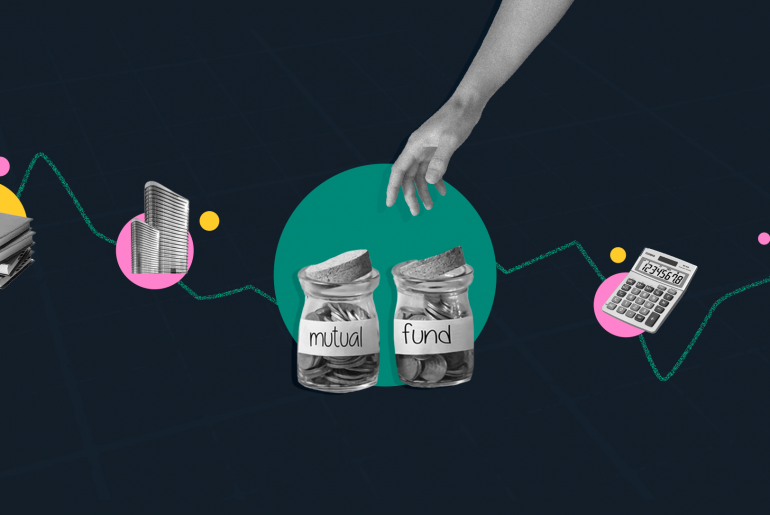Last Updated on Jun 20, 2023 by Harshit Singh
Investment refers to the act of putting money away in a place that earns you interest and helps you build wealth over time. This is the primary difference between investment and saving. Investments put money to work to help you outpace inflation through earning better returns than the rate of growth in inflation. There are various avenues for investment suited to nearly every risk profile and type of investor. This article delves into the various types of investments such as securities and how to invest in them.
Table of Contents
Why is investing a better option?
The older generations saved money by putting it away under the pillow or in cookie jars. The approach was – “Out of sight, out of mind”. This approach looked to curbing expenditure as a means to saving money. However, with time and the development of the financial markets, people soon came to realise that inflation erodes the worth of money and it is necessary to generate wealth at a rate faster than the rise in inflation to be able to afford a comfortable living. This led to the advent of investing. Here are a few reasons why one must explore investments:
To achieve financial ambitions
Investing helps you reach financial goals and objectives, whether you’re buying a house or a car, paying for your child’s school or marriage, or even budgeting for your retirement. Investing your money is the best strategy to attain your long-term objectives.
To combat inflation
You can beat inflation by investing your money. If you don’t invest and instead store your money in a typical savings account, inflation will erode your money’s purchasing power over time. To protect your money’s value, it might make sense to invest in financial products that have the potential to outperform the rate of growth of inflation.
To generate substantial returns
Stocks and mutual funds have the potential to generate much higher rewards than savings accounts or bank fixed deposits. However, the risk of losses is also higher in the equity markets, in line.
Types of investments
Growth-oriented investments and fixed-income investments are the two major categories of investments. A growth-oriented investment option attempts to increase the capital value over time, whereas a fixed-income investment option attempts to provide a consistent (and occasionally rising) interest that is paid to investors as income or re-invested while attempting to balance and maintain the investment’s real value.
Some of the popular types of investments are as follows –
Growth-oriented investments
Mutual funds: One can invest in mutual funds as a lump sum or by setting up a systematic investment plan (SIP) that will allow one to invest with as low as Rs. 500 per month. Mutual funds are financial vehicles that pool money from the participants and invests in assets such as stocks (equities), bonds (including government bonds), money market instruments (eg. Treasury bills), and other financial instruments, as per the objective of the fund. Mutual fund returns are determined by the performance of the fund’s underlying assets in the market.
Equities or Stocks: Stocks, often known as shares or equities, are one of the most popular utility investments. The persons become part-owners of the publicly-listed firm when they buy a share, and profit from selling the share when its price rises in the stock exchange. Equity investments have a greater risk-to-reward ratio than most other types of investments, i.e., they have the potential to deliver high returns but at the cost of high risk prevalent in the investment.
Exchange-Traded Funds: Exchange-traded funds (ETFs) are a combination of investments that track an underlying index, such as stocks, bonds, money market instruments, and so on. They’re a mash-up of several investing options that combine the finest features of mutual funds and stocks. ETFs are exchanged on the stock exchanges and, in terms of regulation, structure, and management, are similar to mutual funds.
Fixed-income investments
Bonds: A bond is synonymous with the fixed-income securities market. In fact, this market itself is often called the bond market. A bond is a financial instrument that reflects a loan made to a corporation or the government by an investor. When you buy a bond, you agree to provide the bond issuer your money in exchange for a fixed interest rate. Corporate bonds, Treasury bills, government securities, municipal bonds, and other types of bonds are a few examples of bonds.
Fixed deposits: Bank fixed deposits (FDs) are traditionally one of the secure investment alternatives that are easily accessible. They are accounts offered by banks and other non-bank financial institutions (NBFIs) and allow investors to invest their excess cash as a lump sum for a certain period of time and offer a pre-decided rate of return, payable quarterly, bi-annually, or yearly. The interest rate is unregulated by market changes, ensuring that the investments are secure. This investment is generally preferred by risk-averse investors.
Retirement planning investments: Two of the most important parts of financial planning are saving for retirement and controlling your income once you retire. Investors have a variety of retirement plans to choose from the fixed-income universe such as the Senior Citizens Savings Scheme (SCSS), National Pension System (NPS), Public Provident Fund (PPF), and bank fixed deposits.
Cash equivalent: Cash equivalents are designed to preserve an investor’s initial investment while also providing a high level of liquidity. They do, however, have the lowest potential profits compared to other investment options. High-interest savings accounts, overnight funds, time deposits, bank accounts, liquid funds, and other cash equivalents are few examples.
Real estate investment: Location and timing are the keys to getting profits when it comes to real estate investing. Several businesses, including hotel, retail, commercial housing, manufacturing, and others, often see potential in the real estate industry. To make large returns on their investments, investors can invest in commercial or residential buildings, as well as real estate mutual funds. One major disadvantage of this asset class is that it requires a very large upfront payment.
Provident funds: Employee Provident Funds (EPFs) and Public Provident Funds (PPFs) make up a sizable portion of your retirement savings. A provident fund is a government-sponsored retirement plan that intends to provide employees a lump sum pay-out when they leave or retire.
Insurance: Insurance products are frequently included in financial plans. Term insurance, life insurance, endowment plans, home insurance, car insurance, and business insurance are some options available. Life insurance, for example, is meant to cover your needs as you age, while term insurance is created to help and provide assistance to your dependents in the event of your untimely death. Medical insurance helps foot medical expenses and some others such as factory or home insurance help bear the costs should the assets be subject to damage or theft.
How to invest
Given the enormous diversity of possible assets to include in a portfolio, investing may be a daunting prospect.
The “risk ladder” in investing divides asset types into categories based on the amount of inherent risk, with cash carrying the lowest risk and alternative investments such as cryptocurrency being the most volatile.
For a new investor, index funds or Exchange-Traded Funds (ETFs) that track the market are usually great options to explore growth-oriented investing. Starting with modest investments and gradually expanding their portfolios is sound advice for investors. Before going on to individual stocks, real estate, and other alternative assets, mutual funds or ETFs may be considered smart places to start.
That said, a well-balanced combination of growth-oriented investment vehicles as well as fixed-income securities can help you capture the benefits of greater returns while also protecting your portfolio from market and inflation risks. Other asset classes such as real estate and insurance may also be considered for the diversification of investment portfolios.
Conclusion
An asset or thing purchased with the intention of generating income or appreciation in value is referred to as an investment. When someone purchases something as an investment, the objective is not to enjoy it, but to use it to generate future riches. Given the enormous diversity of accessible assets to include in an investment portfolio, investing can be intimidating. Using the “risk ladder” that categorises asset types based on their risk quotient may help investors find suitable investment avenues in line with their own risk profile and financial objectives. It is always prudent to reach out to financial advisors before beginning your investment journey.
You may begin your investing adventure after choosing the sort of investment to make. Begin your adventure this Diwali. The Indian stock markets hold an hour-long trading session known as Muhurat trading on Diwali. Investing during this trading session is seen as auspicious. For more information about Muhurat trading, keep an eye on Blog by Tickertape.





